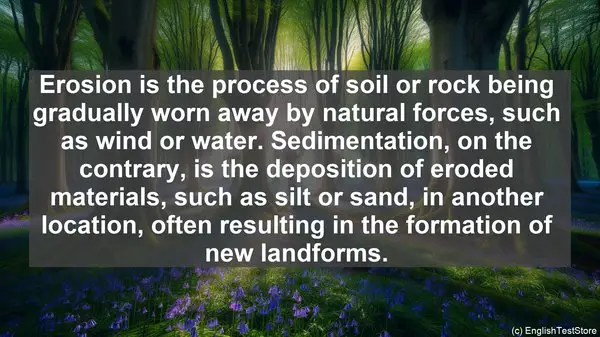Introduction
Today, we’re going to dive into the world of forest management. But before we get started, it’s crucial to clarify some commonly confused words that often arise in this field. By the end of this lesson, you’ll have a solid grasp on these terms, setting you up for success in your future studies and career. So, without further ado, let’s begin!
1. Silviculture vs. Forestry
Silviculture and forestry are often used interchangeably, but they have distinct meanings. Silviculture focuses on the cultivation and care of individual trees, while forestry encompasses a broader scope, including the management of entire forests, considering ecological, economic, and social factors.
2. Clearcutting vs. Selective Harvesting
Clearcutting involves the complete removal of all trees in an area, which can be beneficial in certain situations, such as regenerating a forest after a natural disaster. On the other hand, selective harvesting involves carefully choosing which trees to cut, ensuring the long-term health and diversity of the forest.
3. Biodiversity vs. Species Richness
Biodiversity refers to the variety of life forms within an ecosystem, including plants, animals, and microorganisms. It encompasses not only the number of species present (species richness) but also their genetic diversity and the interactions between them.
4. Old Growth vs. Second Growth Forests
Old growth forests are those that have never been significantly disturbed by human activities and have reached a mature stage, often characterized by large, ancient trees and a complex ecological structure. Second growth forests, on the other hand, are younger forests that have regrown after previous logging or other disturbances.
5. Deforestation vs. Reforestation
Deforestation refers to the permanent removal of forests, usually for conversion to other land uses, such as agriculture or urban development. Reforestation, on the contrary, involves the deliberate planting of trees in areas that were previously forested, aiming to restore forest cover and its associated benefits.
6. Watershed vs. Water Table
A watershed, also known as a drainage basin, is an area of land where all the water, such as rainfall and snowmelt, drains into a common outlet, such as a river or lake. The water table, on the other hand, refers to the underground depth at which the soil and rock are saturated with water.
7. Erosion vs. Sedimentation
Erosion is the process of soil or rock being gradually worn away by natural forces, such as wind or water. Sedimentation, on the contrary, is the deposition of eroded materials, such as silt or sand, in another location, often resulting in the formation of new landforms.
8. Prescribed Burning vs. Wildfire
Prescribed burning, also known as controlled burning, is a planned fire set intentionally under specific conditions to achieve certain ecological objectives, such as reducing fuel loads or promoting the growth of fire-dependent species. Wildfires, on the other hand, are unplanned and often destructive fires that can occur naturally or due to human activities.
9. Invasive Species vs. Native Species
Invasive species are non-native organisms that, when introduced to a new ecosystem, can cause harm to the environment, economy, or human health. Native species, on the contrary, are those that naturally occur in a particular area and have evolved within that ecosystem over time.

10. Carbon Sequestration vs. Carbon Emission
Carbon sequestration is the process of capturing and storing carbon dioxide from the atmosphere, primarily through the growth of plants and trees. This helps mitigate climate change by reducing the concentration of greenhouse gases. Carbon emission, on the other hand, refers to the release of carbon dioxide and other greenhouse gases into the atmosphere, often as a result of human activities.

